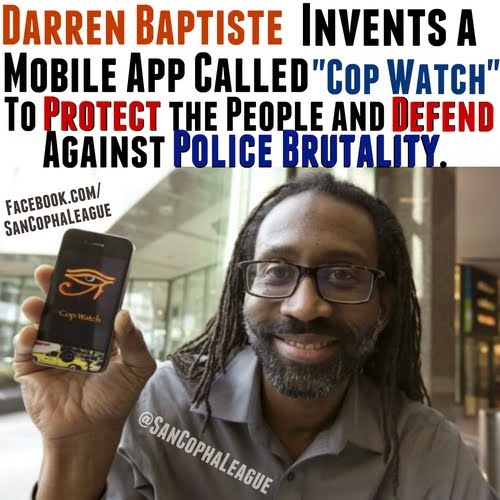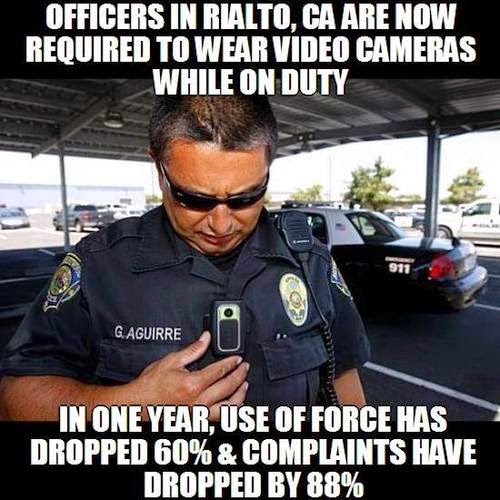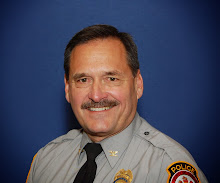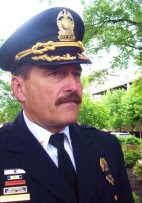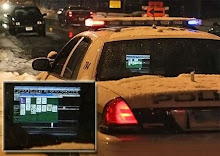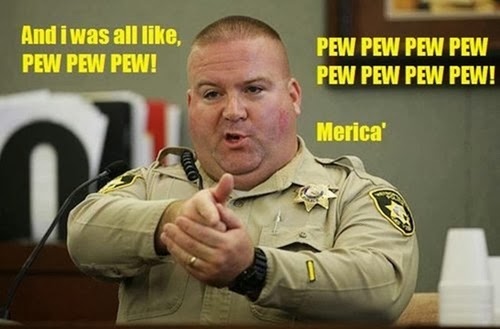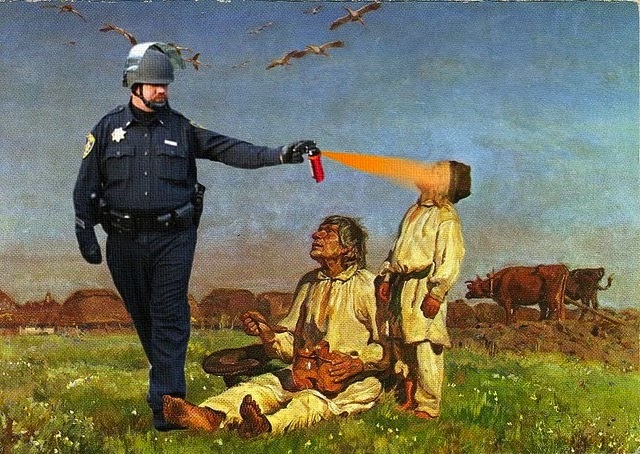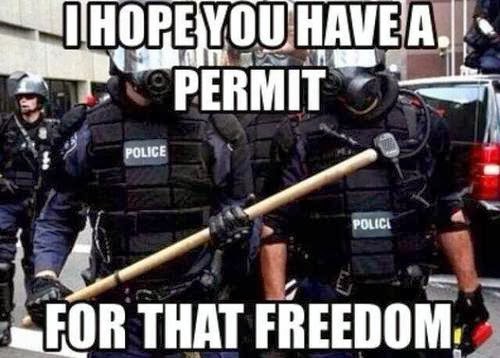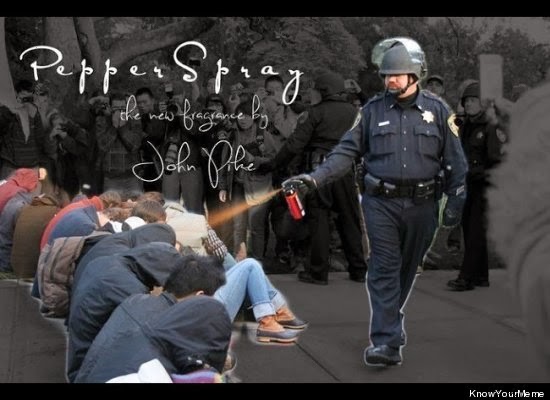A high speed chase in overcrowded Fairfax County, basically they executed this guy for stealing a car
Police pursuit of stolen car ends
in crash injuring 3 men in Fairfax County
by ABC7
Friday, June 23rd 2017
FAIRFAX COUNTY, Va. (ABC7) —
Three men were injured after a police pursuit of a stolen car resulted in a crash
early Friday morning in Fairfax County, Virginia, according to police.
All three men were taken to an
area hospital where one of them is in critical condition and the other two are
in stable condition.
Police say the chase began
shortly before 10 p.m. Thursday.
The accident occurred on
northbound Richmond Highway between Belford Drive and Fordson Road.
An investigation into the
incident is underway, police say.
Column: Independent Progressive: Do Fairfax Teachers Need Uniforms to Get Decent Pay?
By John Lovaas, Reston Impact
Producer/Host
For some time I’ve thought our
public school teachers in Fairfax County are undervalued and underpaid. This
view is based on data I’ve seen in the last couple of years comparing teacher
pay in public school systems in the Metro Washington suburbs. That data
reflects that our Fairfax County teachers’ pay has steadily declined in recent
years relative to that of their counterparts in other jurisdictions.
When I happened to glance
recently at information on pay elsewhere in Fairfax County government, I found
that hundreds of County employees are not suffering as our teachers are. In
fact, the others are well paid by comparison.
Fairfax County firefighters and
uniformed public safety (police and Sheriff’s deputies) personnel are doing
much better than I had imagined. In many cases they are making nearly double
what Fairfax County pays classroom teachers. At present, there are about 3,200
people serving as firefighters, police officers and sheriff’s deputies. Half of
them made over $100,000 per year in 2016 when you include overtime, premium pay
and the stipends they routinely receive.
Firefighters on average make the
most, and arguably have less stressful work than cops or deputy sheriffs.
Sixty-two percent of firefighters make over $100,000 per year, while 43 percent
of police officers make $100,000 or more, and 35 percent of the Sheriff’s
deputies make that much.
Very few teachers earn $100,000
or more, likely less than 5 percent.
Starting salaries for teachers,
police officers, and firefighters are similar — in the low- to mid-$50,000
range. Sheriff’s deputies start at about $10,000 less.
There the similarities end. Among
the ranks of the uniformed services, overtime at premium rates is routine and a
major chunk of the total paycheck. Also, they take home several other forms of
premium rate pay, e.g., callback, emergency, shift, and holiday pay. And there
are several additional stipends. While teachers perform duties that parallel
some of these premium pay categories, they rarely receive anything beyond their
base salary.
This is not to say that uniformed
police officers and sheriff’s deputies, or even firefighters, are overpaid.
These are the folks who help keep us safe and, especially in the case of police
officers, often put their lives in jeopardy doing so. It is hard indeed to
over-value these services.
But, why is it that those to whom
we entrust the education of our children and our country’s future are valued so
much less by the Fairfax County School Board and Board of Supervisors? Unlike
police, firefighters and deputy sheriffs, many of whom make over $100,000 per
year, our teachers rarely can afford to even live in the communities where they
teach because of their much lower incomes. This I just do not understand.
P.S. There are another 800-plus
Fairfax County employees also making over $100,000 per year. They are the heads
of departments, offices, and the many County semi-autonomous organizations —
e.g. the Park Authority, Economic Development Authority, Housing Authority,
etc. — as well as other well-paid denizens of the huge Fairfax County
Government Center.
Police Practices Improve, Citizens Demand More
Board cites progress on Police
Practices improvements, but some citizens demand more.
By Andrea Worker
George Becerra of Burke, who
attends a number of public meetings concerning community issues, wants to know
what county officials will do to change their outreach approach and increase
attendance at important meetings and forums. “They can all get out the word at
campaign time.”
John Lovaas admitted that he was
a bit of a skeptic. Speaking at the May 22 meeting to update Fairfax County
residents on the Ad Hoc Police Practices Review Commission’s recommendations,
the Restonian acknowledged that he hadn’t been expecting all that much to come
from the 32-member commission established by Board of Supervisors Chairman
Sharon Bulova — in spite of the fact that Lovaas had actually been chosen as an
alternate representative.
“But I am more and more impressed by what’s
coming out of the implementation stage,” said Lovaas.
Lovaas may now be cautiously
optimistic, but the meeting that highlighted progress, also subjected its
panelists to criticism, shouts, protest signs, and a dose of expressed
disbelief from many in the small, but vocal audience.
To provide the update and take
questions from the audience were Bulova; Supervisor John Cook (R-Braddock);
Police Chief Edwin Roessler, Jr.; Richard Schott, independent police auditor;
Adrian Steel, Ad Hoc Commission vice chair; Shirley Ginwright, Communities of
Trust chair; and David Rohrer, deputy county executive for public safety.
Bulova opened the session at the
Government Center by announcing that the board had already approved and
implemented or put in motion 172 of the 202 recommendations that the commission
presented in its final report on Oct. 20, 2016. “I am proud … that in the first
year 88 percent of the recommendations have been approved,” said Bulova,
stressing that the board had taken the commission’s findings seriously, and
worked in collaboration with the Sheriff’s Office, as well, to ensure the best
possible results.
TWO NEW FORMS of independent
oversight for the Fairfax County Police Department (FCPD) were established
because of the Ad Hoc Commission. The supervisors recently named nine members —
chosen from more than 140 applicants — to the Civilian Review Panel, to be
chaired by Steel. In addition to the Review Panel, Schott has been named as the
independent police auditor, to report directly to the Board of Supervisors.
The Civilian Panel will have the
authority to review completed FCPD internal administrative investigations
regarding civilian complaints against an officer. They may hold meetings to
inform the public on how investigations were conducted. They may review
complaints of harassment or discrimination, reckless endangerment of a
detainee, or serious violations of Fairfax County or police procedures, and
misuse of authority, as part of their duties.
The independent police auditor
will handle the cases of police use-of-force that result in serious injury or
death.
The Ad Hoc Commission, made up of
private citizens and members of the law enforcement, legal, and academic
communities, as well as members of the media and public relations arena,
divided their review responsibilities into five categories: Use-of-force,
independent oversight, mental health and crisis intervention training (CIT),
communications, and diversity and recruiting.
Cook chairs the board’s Public
Safety Committee, and had the task of bringing the recommendations to the
committee and seeing that they were “worked through, not just rubber stamped
one way or the other.”
The majority of the
recommendations — 34 percent — came from the use-of-force sub-committee. Even
though review of police practices had been on-going before, the impetus for the
establishment of the Ad Hoc Commission itself came after the 2013 fatal
shooting of John Geer of Springfield, by then Fairfax County Patrolman Adam
Torres, while Geer stood unarmed in his own doorway.
After Geer’s death, with no
information being made available to the public, several community groups formed
and petitioned for reforms and more accountability from county law enforcement
agencies. In early 2015 protests demanding “Justice for John Geer” were held
outside police headquarters and the county government center.
The public did not learn the name
of the officer involved in the shooting, or many of the relevant details until
17 months after the incident, when the information was released by a court
order. The demand for more transparency did not fade away. In March of 2015,
Bulova received the board’s support to create the Ad Hoc Commission with the
mission to “review FCPD policies and practices related to critical incidents,
use-of-force training policies, threat assessments, as well as those within the
Internal Affairs Division.”
While insisting that avoiding any
loss of life during police-public interaction had always been the guiding
standard, at the meeting Cook said that one result of the commission’s efforts
was a re-commitment to the “Sanctity of Life” philosophy. Cook referenced
revisions made to FCPD policies. Last updated in 2013, revised General Order
540 on the subject of the use-of-force by county law enforcement personnel took
effect on March 31 of this year. The order will be reviewed again in January of
2019, to determine its effectiveness and make any additional revisions if
necessary.
Roessler also made mention of the
revised policies, explaining that a number of policies had been consolidated
into “one concise document” to clarify the appropriate actions to be taken
while carrying out their duties, and the proper reporting required after the
use of force by county police officers.
Roessler also praised the
establishment of the Diversion First program, which is designed to divert
persons with mental health issues and intellectual or developmental
disabilities from detention to treatment wherever possible.
Since its launch in January of
2016, Diversion First has seen 375 individuals transferred for appropriate
treatment options, instead of being arrested and detained for non-violent
offenses.
To make Diversion First truly
successful, Roessler said that law enforcement personnel had to be trained to
handle citizens with these challenges. To that end, “de-escalation” training
was begun for all FCPD officers last year.
WITH 52 ADVISEMENTS, the
communications sub-committee of the commission came in second, targeting the
transparency complaints and addressing the timeline gap between a use-of-force
event and the public’s access to the details.
Roessler announced the
establishment of a Public Affairs Bureau within the FCPD. The chief also
mentioned pages on the FCPD’s website where information on use-of-force
incidents are made available, including links to press conferences and
briefings by Roessler and other officials.
Shirley Ginwright is the chair of
the Fairfax County Communities of Trust Committee (COTC), a diverse citizen
group “focused on strengthening and building positive relationships between
public safety agencies and the communities they serve.” Since its inception in
December, 2014, COTC has been looking for ways to connect law enforcement with
the residents they serve. They have a particular interest in programs that
focus on the county’s youth, and cutting off the “supply” of youngsters in the
school-to-prison pipeline. Ginwright invited the audience to attend the COTC’s
upcoming “Public Safety Day” on June 3 in Lorton.
Despite the numerous high notes
in the one-year Ad Hoc Police Practices Review Commission’s report card, things
got heated during the public commentary session.
Caycee Utley, lead organizer with
Showing up for Racial Justice (SURJ) Northern Virginia, castigated all of the
panelists over the death of 37-year-old Natasha McKenna, diagnosed with
schizophrenia, bipolar disorder and depression from the age of 14. The 5’ 4,”
130-pound African-American McKenna, in custody at the Fairfax Adult Detention
Center on an outstanding warrant for attacking a police officer, was tasered
multiple times when sheriff’s deputies tried to put her in a wheeled restraint
chair. At the time, McKenna was handcuffed behind her back, shackled around the
legs with a bobble strap connecting the restraints, and had a spit mask placed
over her face.
McKenna went into cardiac arrest
shortly after being tasered. She was revived, but died five days later when it
was determined that she had no brain activity, and life support was
discontinued.
“Whose side are you on?” shouted several
members of the SURJ group, waving their posters and pointing to an empty seat
with a sign reading “Natasha McKenna” placed upon it.
“We don’t want to be on sides,” answered Cook.
The new police internal auditor,
Schott, added, “This is what I have been hired to address.”
Both Roessler and Bulova tried to
explain that the case of McKenna and some of the others being referenced by the
SURJ supporters were not within their direct purview, citing that the Sheriff’s
Office does not report to the Board of Supervisors.
“So nobody protects us from them?” Utley
replied. “What pressures have you put on the sheriff?”
Attendee Jenifer Hitchcock
“couldn’t understand how they cleared the deputies” involved in McKenna’s
death.
AT ONE POINT during the public
comment phase, Cook refused to respond to “people yelling out of turn” and
Bulova threatened to adjourn the meeting.
After Utley said, “There can’t be
any trust until there is justice,” Bulova invited her to “talk personally”
after the meeting.
Several of the citizen speakers
described the Civilian Review Panel and the police auditor as “toothless” —
lacking in the power to do anything. “Smoke and mirrors,” said Mary Tracy of
Alexandria. “The county has a long way to go on this. What about body cams? The
Department of Justice was offering $1 million grants, but we made no efforts to
get them.”
Several of the panelists
explained that the auditor is prohibited under Virginia Law from investigating
or conducting interviews. Citizens responded that they were willing to help the
board get those changes made at the General Assembly, “just show us what to do.
Support us.”
Kofi Annan, president of the
Fairfax NAACP, took a more conciliatory approach in his remarks, calling the
work done so far “a good start,” but he challenged the county to look into the
disparity in the treatment of blacks versus whites within the legal system and
in detention. Annan called for measures to track such information and make it
easily available to the public.
George Becerra of Burke, a
community advocate and familiar face at public meetings on diverse issues
around the county, asked a different kind of question of the panelists. He
glanced around the large auditorium, then, pointing to the small numbers in
attendance, Becerra asked “How will you change your outreach efforts?”
In response, Ginwright with
Communities of Trust referred again to her organization’s Public Safety Days
campaigns. After the meeting, Becerra expressed his disappointment with the
answer. He acknowledged that citizens were equally responsible for informing
themselves and in becoming engaged, but said that the information is often hard
to find and overwhelming. With so many media relations personnel and staffers,
Becerra thinks just a bit more of the work should fall on the county’s side of
the fence.
“During campaigns, politicians find a way to
bombard your email with information and requests for donations and support.”
Becerra wants to know why something similar can’t be done for these important
issues and meetings. “There’s maybe 40 people here tonight. Forty people out of
a population of 1.1 million. That’s a lot of voices going unheard.”
Subscribe to:
Posts (Atom)


